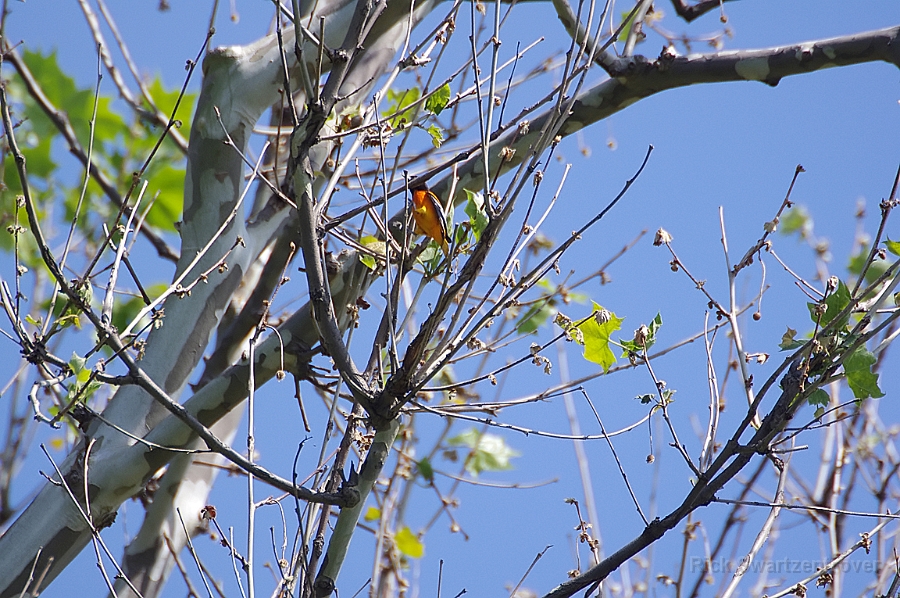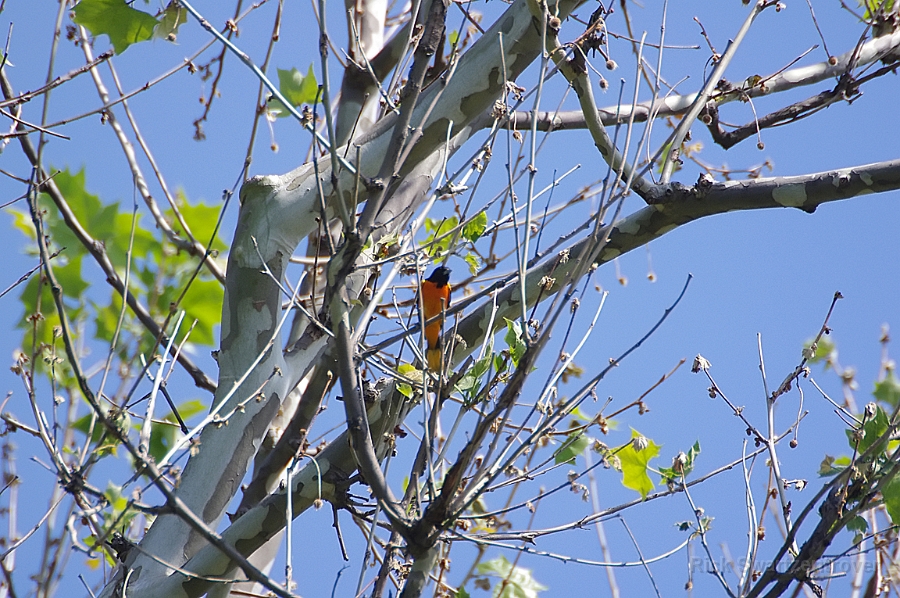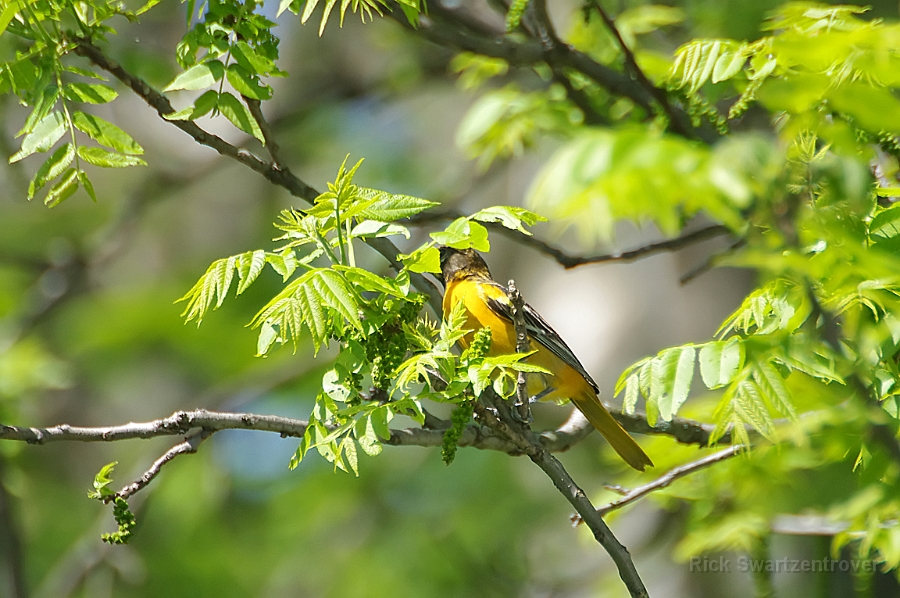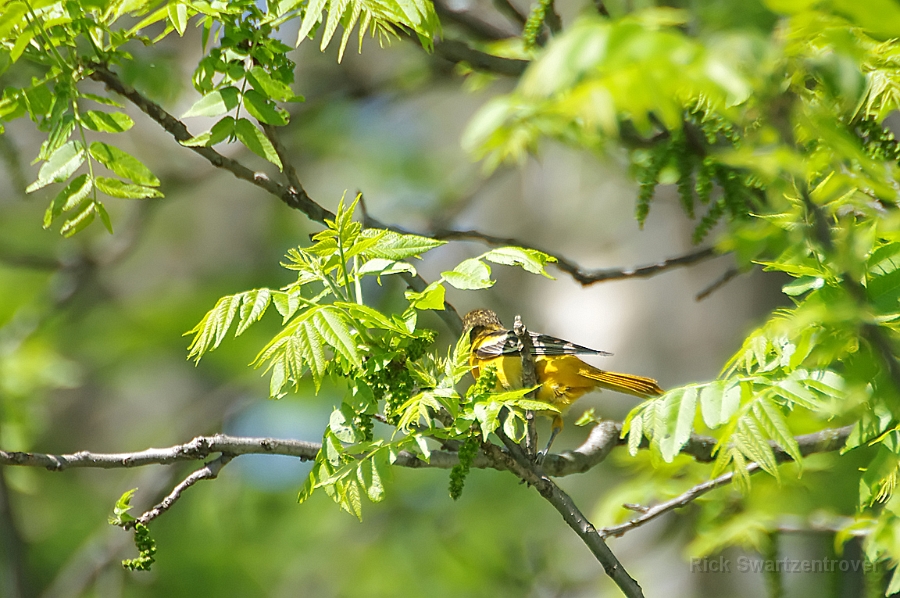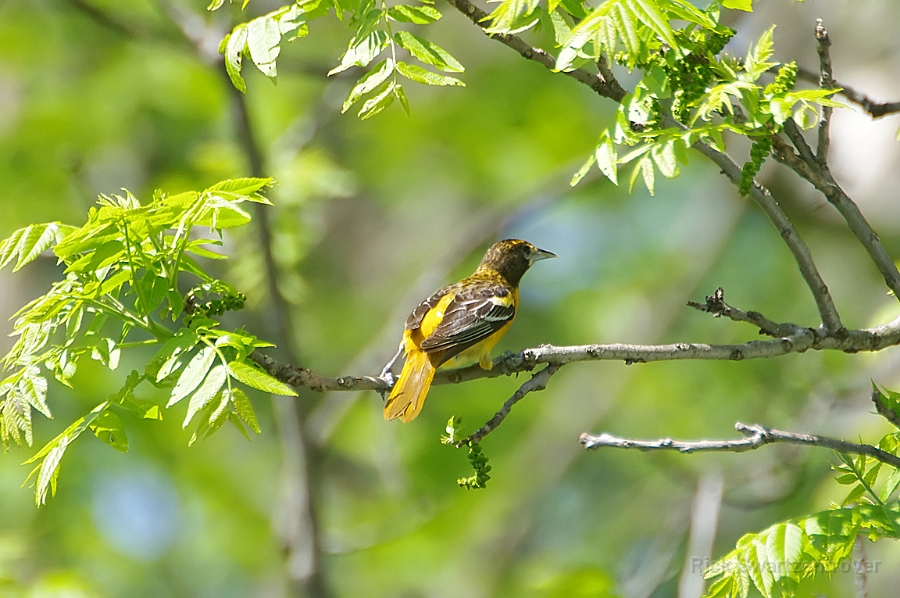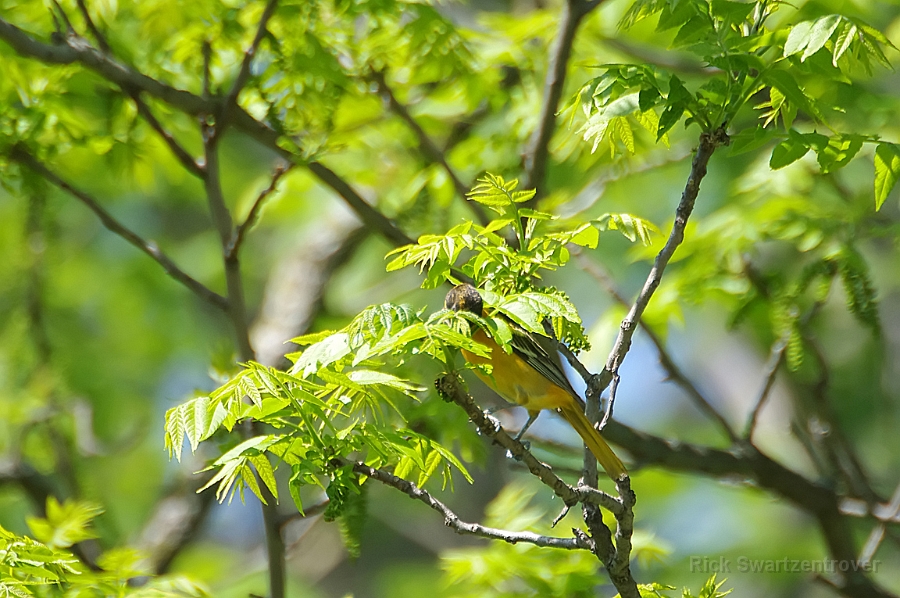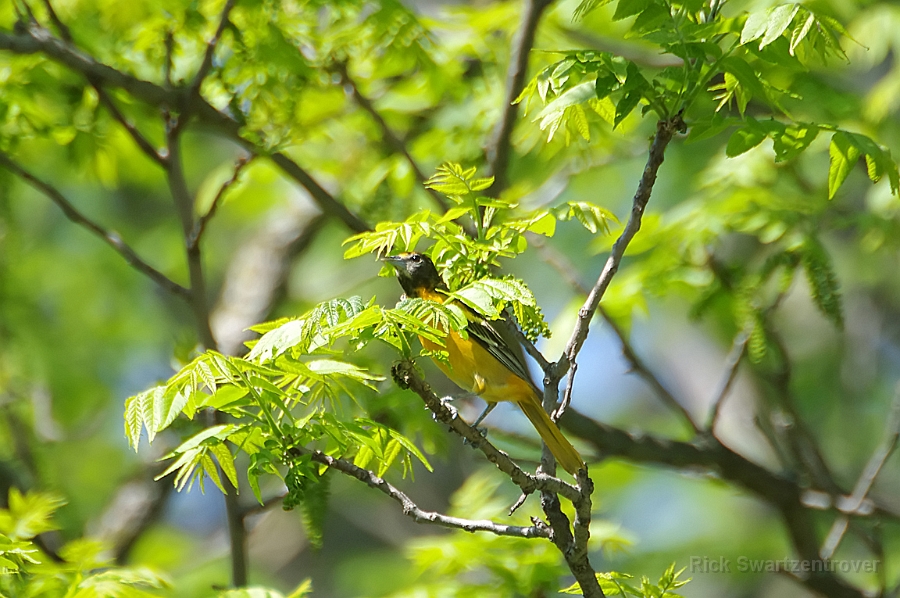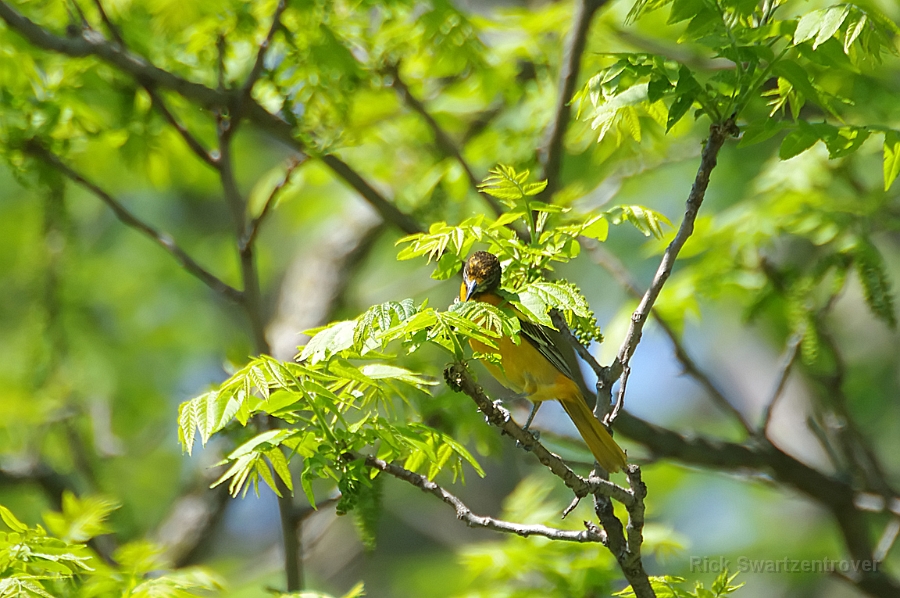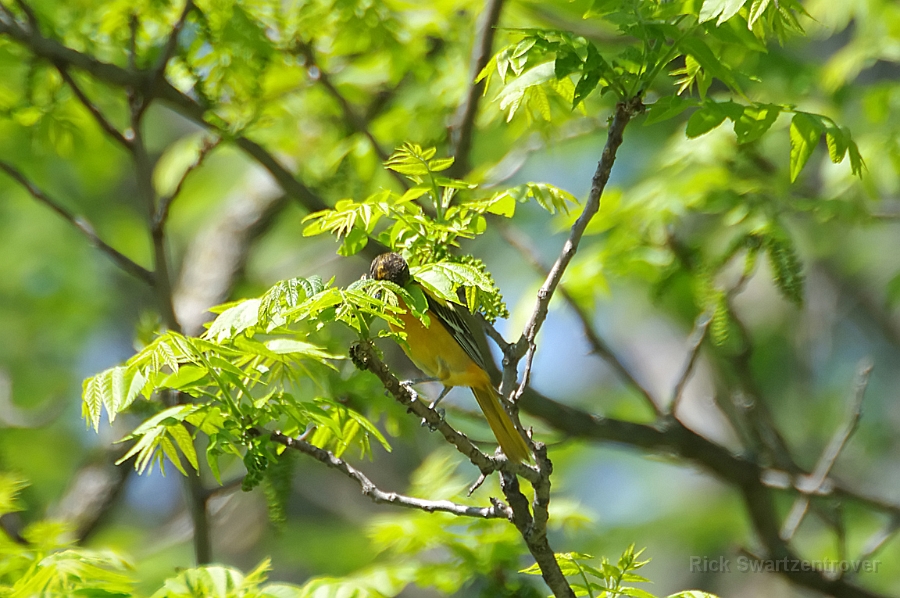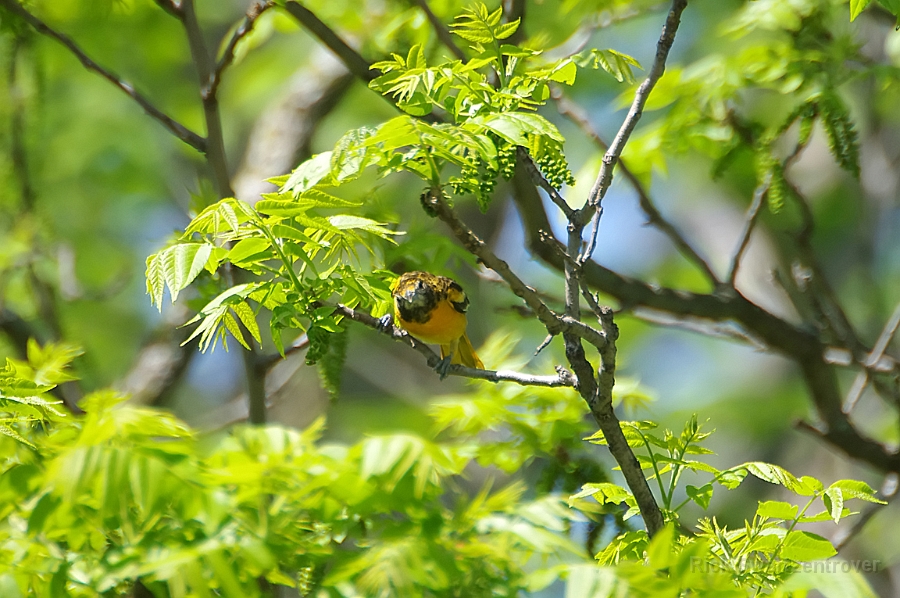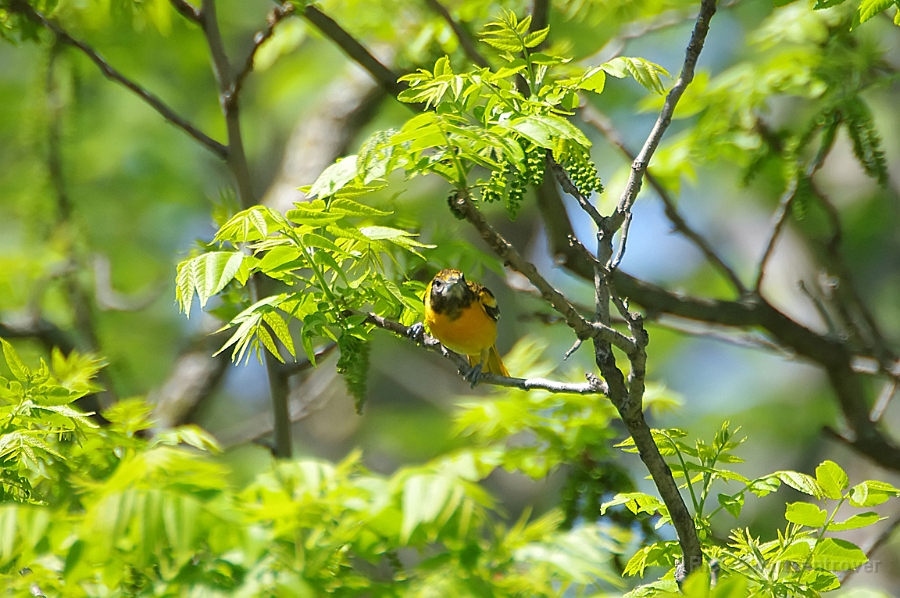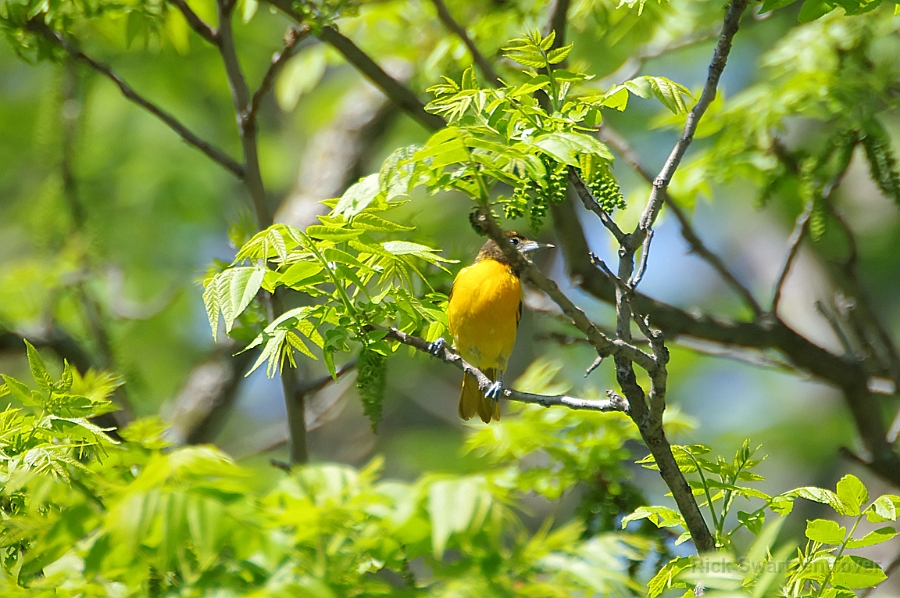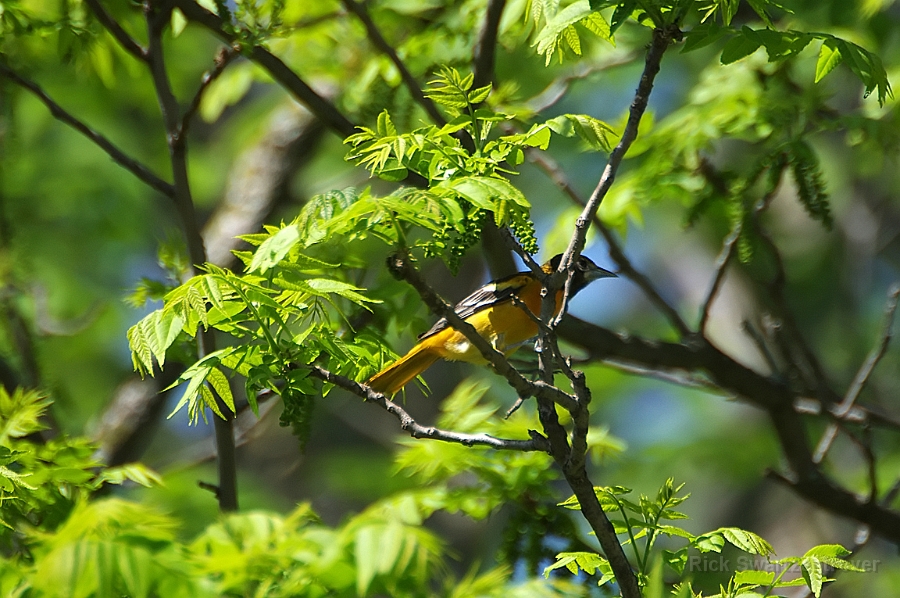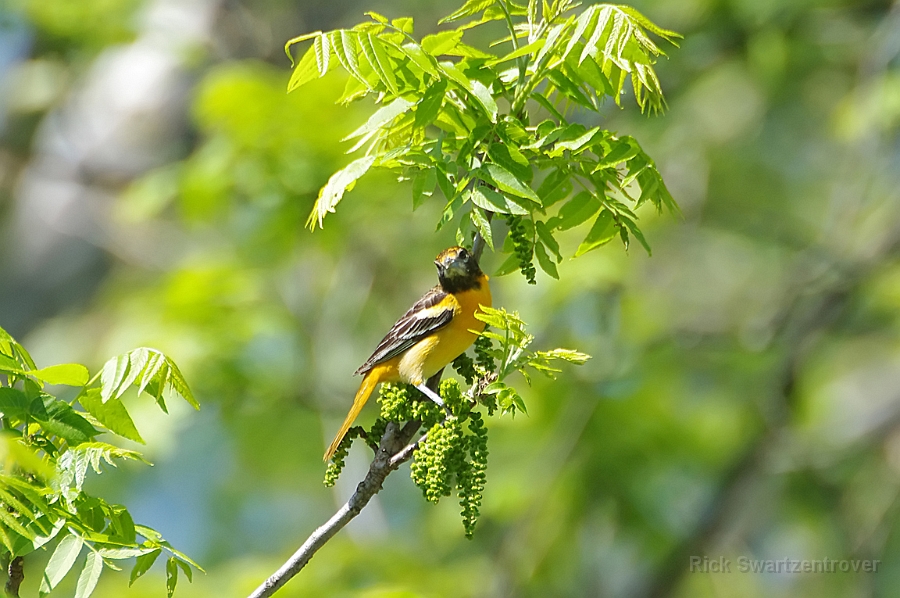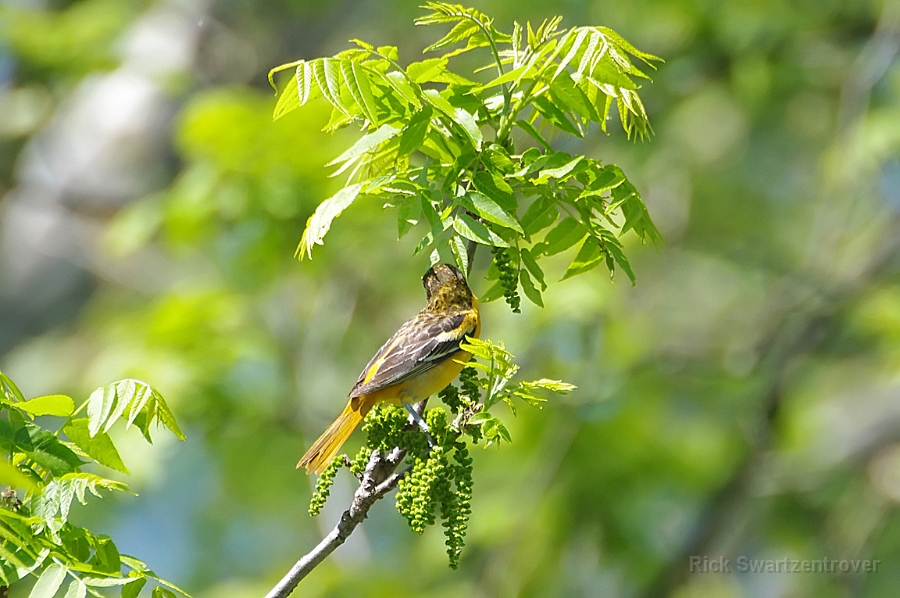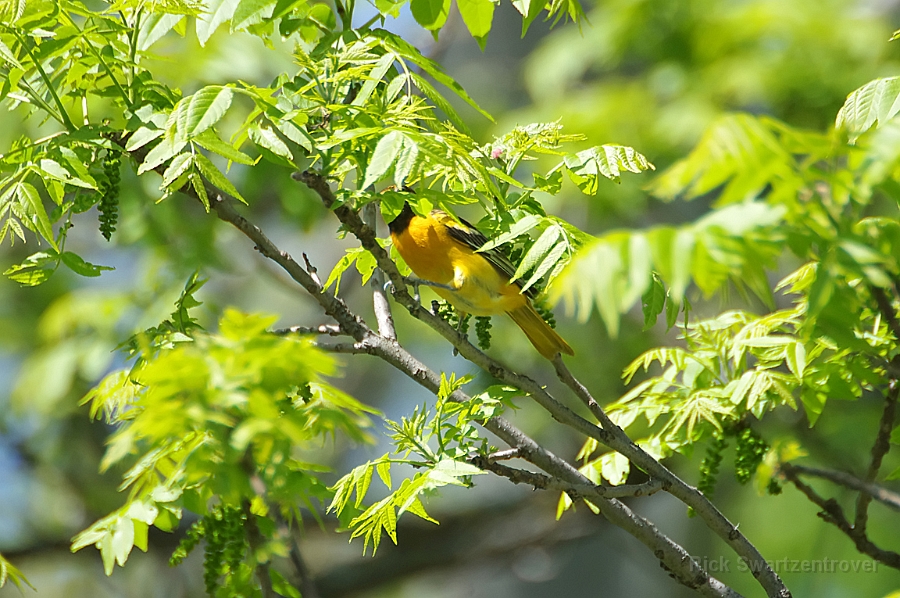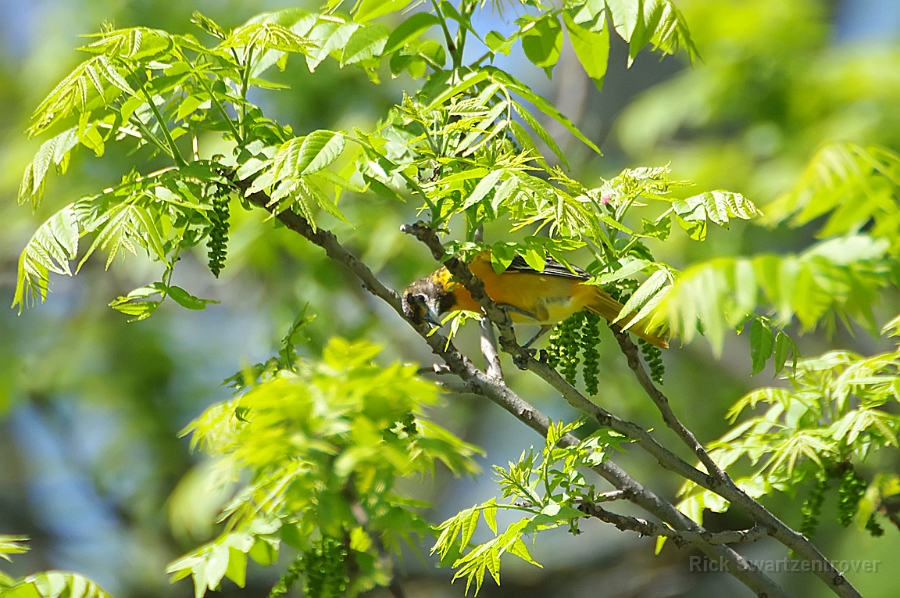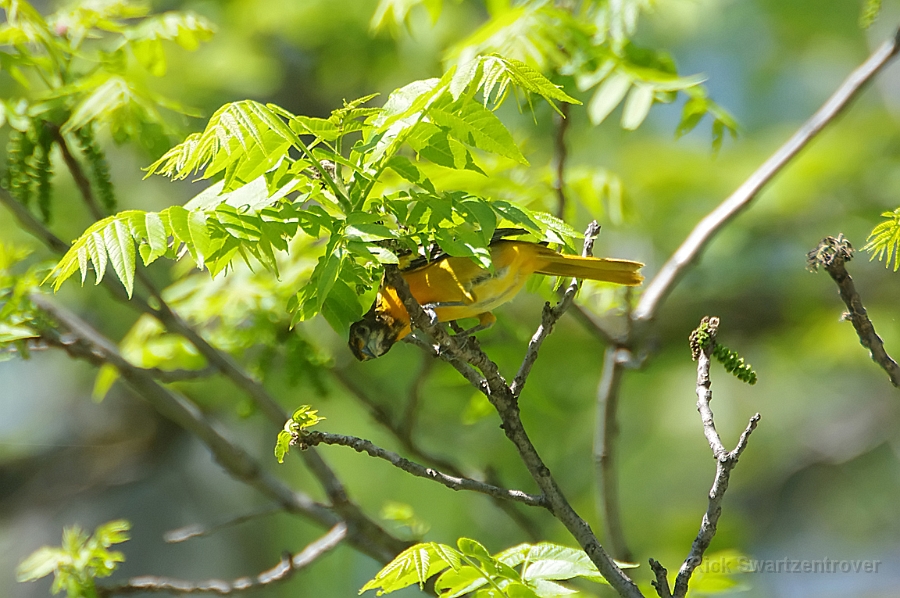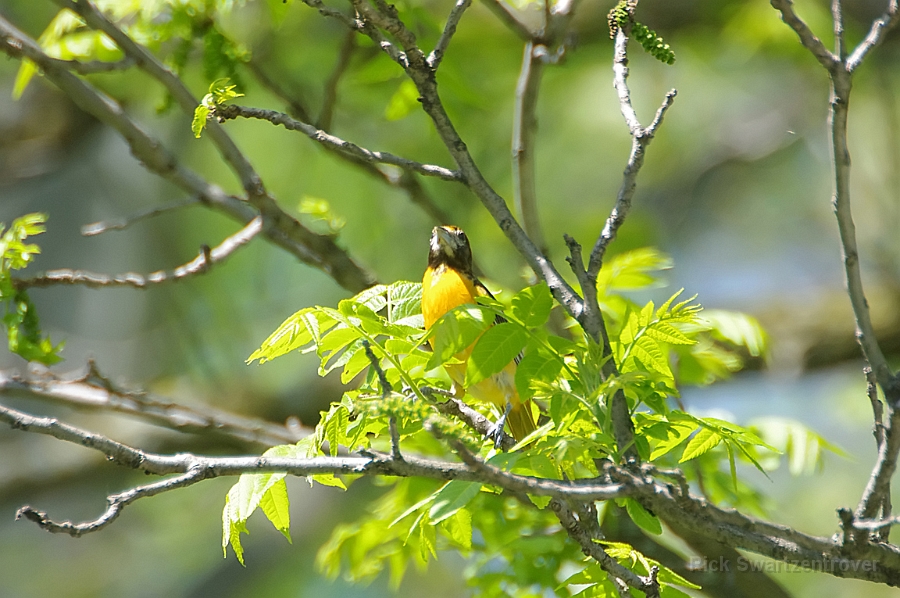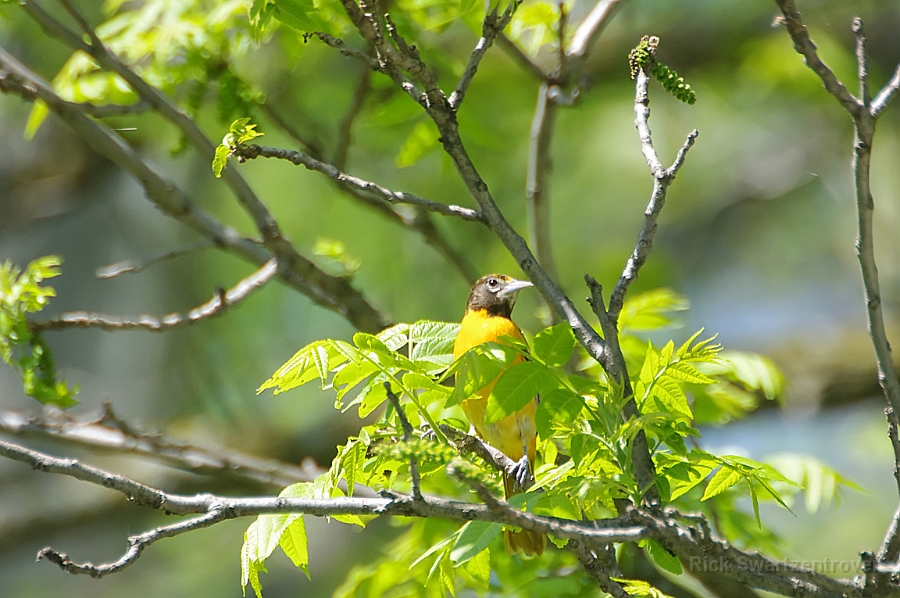|
|
|
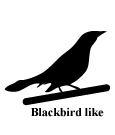 |
Baltimore Oriole
|
| Icterus galbula | |
With its brilliant orange and black plumage, the Baltimore Oriole's arrival is eagerly awaited by birders each spring migration. Its preference for open areas with tall trees has made it a common inhabitant of parks and suburban areas.
Interesting Information
-
The Baltimore Oriole hybridizes extensively with the Bullock's Oriole where their ranges overlap in the Great Plains. The two species were considered the same for a while and called the Northern Oriole, but recently, they were separated again. Molecular studies of the oriole genus indicate that the two species are not very closely related.
-
The "orioles" of the Americas were named after similarly-appearing birds in the Old World. The American orioles are not closely related to the true orioles in the family Oriolidae. They are more closely related to blackbirds and meadowlarks. Both New and Old world orioles are brightly colored with red, yellow, and black; have long tails and long pointed bills; build hanging, woven nests; and prefer tall trees around open areas.
-
Young male Baltimore Orioles do not achieve adult plumage until the fall of their second year. But some first-year males with female-like plumage succeed in attracting a mate and nest successfully.
Description
Adult Description
-
Medium-sized songbird.
-
Male brilliant orange with black head
-
Length Range: 18-21 cm (7-8.25 in)
-
Weight: 34 g (1.2 oz)
-
Size: Small (5 - 9 in)
Sex Differences
Male Description
Head, throat, mantle, wings, and tail black. Underparts, shoulders, tip and edges of tail, and rump orange to yellow orange. May be deeper orange on chest. Single white wingbar; orange shoulder makes a second wingbar. Bill pointed and silvery.
Female Description
Variable in appearance. May be similar to male, but head more dark brownish olive than black, and body paler orange. Usually face, throat, and underparts orange. Tail brownish olive, without black. White in shoulder gives it two white wingbars.
Immature
Immature similar to female, but paler and without black on head and back. May have gray belly. Young male looks like adult only in second fall.
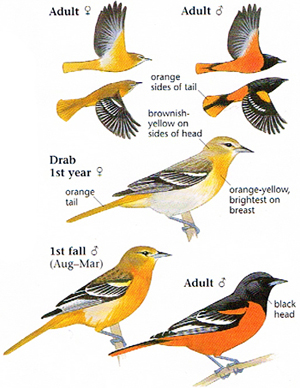
Photo taken from: The Sibley Field Guide by David Allen Sibley
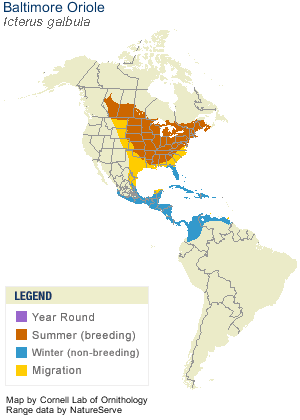
© 2003 Cornell Lab of Ornithology
|
Habitat |
|
|
Behavior |
|
Gleans and probes in trees for insects. |
|
Food |
|
Caterpillars, fruits, insects, spiders, and nectar. |
Taxonomy
| Kingdom: | Animalia |
| Phylum: | Chordata |
| Subphylum: | Vertebrata |
| Class: | Aves |
| Order: | Passeriformes |
| Family: | Icteridae |
| Genus: | Icterus |
| Species: | Icterus galbula |
Similar Species |
|
|
Bird Sound |
|
Song: a series of rich whistled notes interspersed with rattles. Call: a chatter. |
|
Eggs look like this |
|
Photo taken from: ARCTOS Collaborative Collection Management Solution |
